Rhino poaching causes a lot of harm to Rhinos and our environment. Rhinos are currently being decimated in Africa and other regions where these magnificent animals are found.
The scale of poaching has escalated over the last five years. The growing demand for rhino horns in the Asian market and the high prices that rhino horn fetches on these illegal markets fuels this.
Traditional poachers were easy to control with counter-poaching operations. Large international criminal syndicates support modern-day rhino poachers. They have high-end technology like helicopters. This assists them in locating and killing their victims without being detected.
These syndicates also use skilled personnel. They target corrupt officials to aid and abet their poaching operations.
What is Rhino Poaching?
Rhino poaching is the illegal hunting of rhinoceros, typically for their horns. Poachers kill rhinos by shooting or poisoning them. They then saw off their horns to sell them on the black market. The number of rhinos poached in 2015 was the highest in 2 decades. It is to be a serious threat to African rhino populations.
Rhino poaching is done for two main reasons. The first one is to sell the horns to make jewelry or other decorative objects. The second reason is to sell horns as medicine in some Asian countries.
Poachers have firearms, making them dangerous to anti-poaching teams who risk their lives to protect rhinos. Rhinos are scarce today, and there is irregular availability of rhino horns. This drives the price of horns even higher, increasing pressure on dwindling rhino populations.
Rhinos
Rhinoceroses have a or two horns on the upper nose surface; these horns are not actual but are made of keratin. Modern rhinoceroses are massive creatures. Adults of large mammals weigh between 3 and 5 tons. Rhinoceroses have tough skin. Their skin produces platelike folds, particularly on the shoulder and thighs. All rhinoceros are gray or brown except the white rhinoceros, which is paler than the rest. They are hairless, aside from the tail tip and ear margins, except the Sumatran rhinoceros. However, some fossil species were coated in dense fur. The contemporary species’ foot has three small toes that are topped with wide.
See Related: Javan Rhino
Drivers of Rhino Poaching in Africa
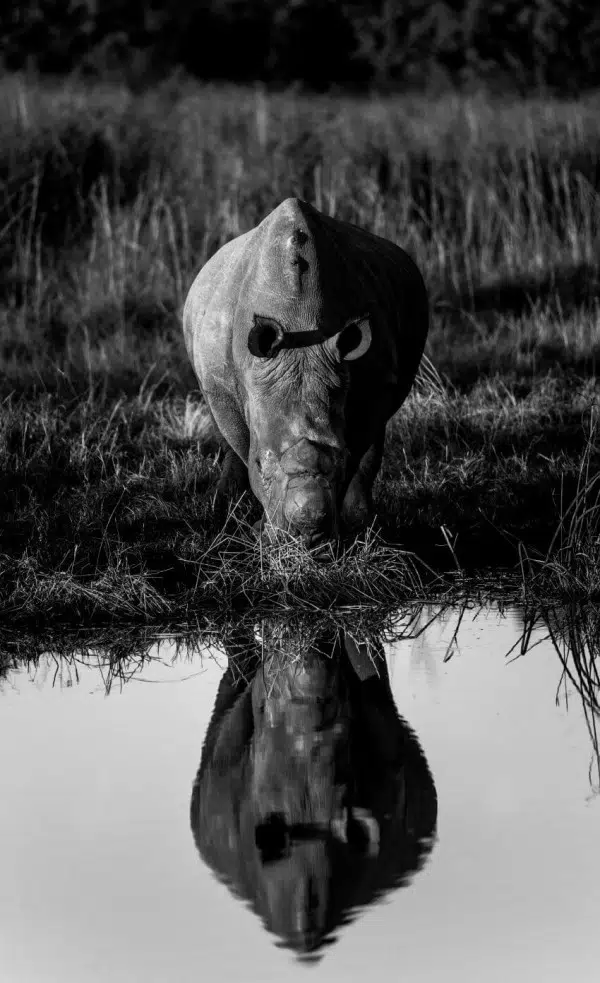
The increase in rhino poaching incidents can be explained by economics. The demand for rhino horns is high – much higher than the supply. When demand for a resource exceeds supply, the help becomes more valuable. Consequently, there is more of an incentive to harvest it.
The demand for rhino horn stems from a few East- and South-Eastern Asian countries. Historically were in high need of dagger handles for their supposed aphrodisiac properties and were used in traditional Asian medicine. More recently, it has been marketed as a cure for cancer and other non-traditional medical conditions.
Traditional Chinese medicine uses rhino horns. But it is becoming popular as a status symbol to show success and money. Poaching is becoming a danger in all rhino-range nations. South Africa is being targeted because it is where the majority of rhinoceros are in the world. Field programs must invest in anti-poaching activities now more than ever.
Poachers are currently equipped with sophisticated tools. They use these to monitor and kill rhinos by international criminal groups. A tranquilizer pistol is used to subdue the rhino before its horn is chopped off. This lets the rhinos wake up and bleed to their death slowly and painfully. Poachers are commonly armed with firearms, making them extremely threatening to law enforcement.
South Africa has the highest number of rhinos globally. Other countries have already had their rhino poached to the brink of extinction. Consequently, poachers are now targeting South African rhinos to meet the demands of the Asian market.
In South Africa, the number of rhinos killed has increased yearly since 2007 (when 13 rhinos were killed).
A staggering 668 rhinos were poached in 2012. 635 were killed by September 2013 (425 and 396 were killed in the Kruger National Park – a protected area – in 2012 and 2013).
See Related: Ways to Save Animals Facing Extinction
What do poaching gangs do with rhino horns?
We mentioned that the rhino horn has “medicinal” use. The middle-class growth resulted in using the rhino horn as a status symbol in several countries. Many individuals publicly use rhino horns to show off their affluence.
Investigations conducted by illegal wildlife trade organizations reveal that demand for rhino horn is price independent. This implies that people will acquire it no matter how pricey it is.
According to rhino trade investigations, consumers prefer wild rhino horns to farmed ones. They are not concerned about rhino populations or ashamed of using it. This shows that the market for rhino horn is likely to remain the same since people’s ideas are deeply embedded in the culture. Rhino horn is used to manufacture ornaments and jewelry.
Do rhino horns have medicinal benefits?
The use of rhino horn has no medical value. Many scientific studies have shown no medicinal advantage to consuming rhino horn treatments. But the demand is still quite high in many Asian nations. A rhino’s horn is formed of keratin. It is the same substance that makes up human hair and fingernails.
Threats to Rhino Populations
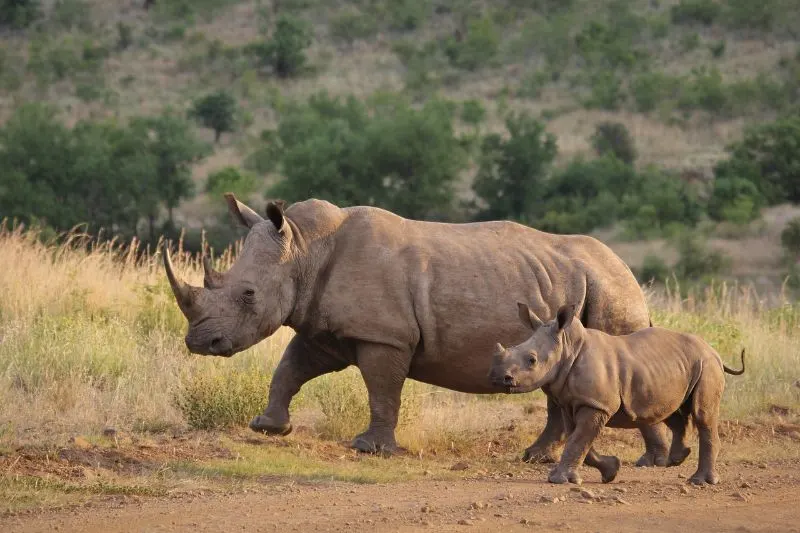
Species of rhinos are endangered and close to extinction. The biggest threat to them is rhinoceros poaching. One of the root causes of this poaching crisis is the belief in traditional medicine. Despite the lack of scientific evidence, they think it is a prized ingredient that can heal.
Rhino habitat loss
The most serious challenge to rhinos is habitat loss. The rhino’s native habitat is being destroyed in Africa and Asia as more land is occupied for human development and farms.
One million species of plants and animals are currently threatened with extinction. The research portrayed a bleak picture of the extinction of species. There are wildlife population decreases, habitat loss, and ecosystem service depletion. It demonstrates that humans are losing nature at an unsustainable rate.
Rhinos are frequently forced out of their natural environment by a lack of water or food. The invasion of human contact with their environment also causes it. It does so through the expansion of farming, buildings, and construction.
Rhinos are solitary creatures that generally avoid human contact. They prefer to live alone and need a big area to graze and dwell in. As human settlement expands into rhino territory, natural resources are depleted. Rhinos are forced to look elsewhere for an appropriate spot to live, reproduce, and rear their young.
The impact of rhino habitat loss has a rippling effect on other animals and plants that dwell in that environment. A black rhino, for example, is a browser that acts as a natural pruner by eating the leaves of shrubs and trees. This prevents these plants from getting out of control and some vegetation from choking out other varieties.
If rhinos are pushed to leave their natural habitats owing to environmental changes, they may be less protected against poaching. As a result, we must do all possible to mitigate environmental dangers and habitat loss.
War
Protection for rhinos is frequently limited or non-existent in locations where law enforcement is reduced or non-existent. It is notable in war zones with political turmoil or corruption. Due to this, poachers will find it simpler to kill rhinos and some other endangered species.
Northern white rhinos used to traverse huge regions of Uganda, Sudan, and Chad. The Central African Republic, and the Democratic Republic of the Congo. There were nearly 6,000 northern white rhinos in Africa in the 1940s. But by the 1980s, that number had dropped to less than twenty. Since then, the figures have dropped dramatically. The northern white rhino is currently thought to be extinct in the wild. Only two females remain in the world after the death of the final male.
Only two females are surviving on the globe after the passing of the final male Sudan at Ol Pejeta Conservancy. The northern white rhino is officially deemed extinct in the wild.
The high amount of poaching in these nations was one of the main reasons for their decline. This is particularly true in the Democratic Republic of the Congo. Civil conflict and upheaval led to unregulated and corrupt political administration.
See Related: Is Hunting Good or Bad for the Environment?
Conservation Efforts to Combat Rhino Poaching
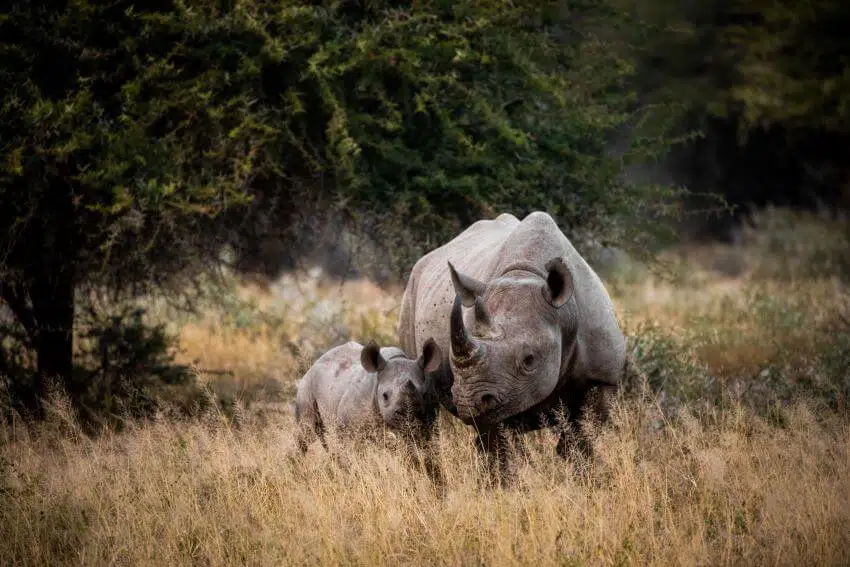
Rhino poaching is dangerous not only for rhinos but also for humans.
The South African government and conservation authorities have recognized the seriousness of the situation. They are doing their best to tackle rhino poaching, yet 267 rhino poachers were arrested in 2012.
And to date, there have been 165 arrests in 2013. This appears to have little impact on the number of rhinos targeted and killed. Many believe it is ineffective to nab the poachers on the ground. They come from impoverished communities enticed by the financial incentives offered.
The poachers who do the ‘wet work’ are completely indispensable. If they are arrested, their bosses find other eager impoverished candidates to replace them.
For anti-poaching efforts to be successful, more effort should go into catching the king-pins. They control these operations and who has the most to gain (and lose). When caught and prosecuted, they should face the full might of the law and receive the harshest sentences possible.
International efforts to combat rhino poaching have seen a collaborative partnership between local environmental organizations.
The Endangered Wildlife Trust (EWT) and Asian environmental group Education for Nature – Vietnam (ENV) create awareness campaigns in Asian countries. It campaigns in Vietnam, where the demand for rhino horns is high.
According to Lynette Coetzee of EWT, “We are extremely excited about our partnership with ENV. This crucial buy-in from a respected and well-known Vietnamese NGO ensures the campaign will help turn the tide on the rhino’s plight.
Organizations
World Wildlife Fund

World Wildlife Fund (WWF) is assisting in the fight against key threats by enhancing protected areas in Africa and Asia. They safeguard rhino habitats and combat the illegal traffic of rhino horns. WWF is partnering with TRAFFIC on the Wildlife Crime Initiative to monitor, expose, and combat poaching and the illegal trade in rhino horn — and to reduce demand.
WWF assists in expanding and creating additional protected areas. They connect isolated rhino habitats and increase security in these places. It also promotes wildlife-based tourism. These funds conservation initiatives and provide revenue to local communities.
WWF also works with people living near protected areas to assist them in making more sustainable use of their natural resources. WWF also supports rhino translocation to establish new, secure populations.
The World Wildlife Fund works on ambitious programs to develop green corridors for wildlife. It safeguards forests and oceans and campaigns for a worldwide effort to halt illegal wildlife trade. The organization is also involved in rhino breeding programs and conservation activities. This includes transferring rhinos to restored areas. There they can have protection from habitat degradation and poaching.
In 2013, the WWF launched the Black Rhino Ranger Expansion Project. This is in collaboration with Ezemvelo KZN Wildlife and Eastern Cape Parks. Since the project’s inception, 12 new black rhino communities in secure environments have been formed. Two hundred one black rhinos have also been transferred. In addition, the WWF contributed £23.5 million in 2019 to restore habitats and safeguard endangered species worldwide.
See Related: Wildlife Conservation Society
Save the Rhino International
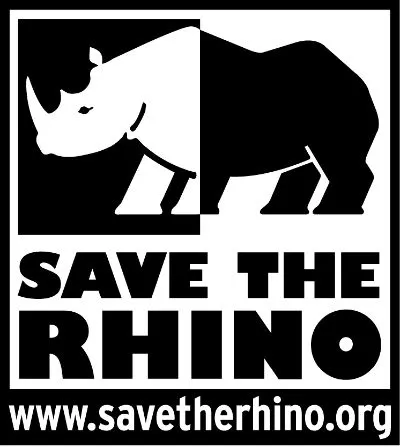
Charity Navigator says Save the Rhino International has a 99.08% program expense ratio. This demonstrates its high share of income that goes directly to charity causes. According to its financial statement, the organization uses 87% of its earnings on charitable operations and 13% on fundraising.
Save the Rhino International raises cash to assist rangers trying to catch poachers in Africa and Asia. The organization also hosts annual seminars for anti-poaching dog units around Africa. It brings people together to share expertise and learn new ways to prevent rhino poaching. Their ground-breaking Lolesha Luangwa environmental education program works with schools around Zambia’s North Luangwa National Park. It engages students in positive environmental projects that will help rhino populations survive.
Since 2014, Save the Rhino has helped cut rhino poaching by more than 50% through various approaches. In 2019, they donated £2.5 million to rhino conservation efforts in Africa and Asia. This includes a $100,000 contribution to the Sumatran Rhino Rescue initiative. This aided in constructing a new veterinary laboratory at the Sumatran Rhino Sanctuary in Way Kambas National Park. The foundation began the ground-breaking Chi Campaign in 2014 to educate the public and lower the market for rhino horns in Vietnam. Around 5,000 companies have joined the cause since its inception, with several CEOs publicly promising not to ingest rhino horn.
Tusk Trust
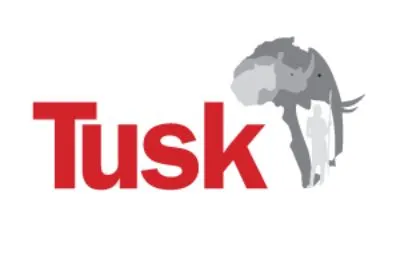
Tusk Trust collaborates with local organizations to establish long-term conservation projects for African flagstone species. This includes rhinos. They make significant investments in anti-poaching activities. They also urge tougher border controls to combat the illegal wildlife trade.
The organization also promotes the preservation of habitat corridors. They connect natural animal areas with restored ecosystems and cover 10 million acres of land.
Aside from these, they offer environmental education and outreach initiatives. Their goal is to educate local people and schoolchildren about successful conservation management.
Tusk has funded and assisted in the launch of effective conservation initiatives in 20 countries to date. This has improved protection for over 70 million hectares of land and over 40 endangered species. The Save the Rhino Trust program monitors and preserves about 25,000 hectares of Black Rhino habitat in Northeast Namibia. It collaborates with the Ministry of Environment and Tourism to offer anti-poaching operations with training, resources, and equipment. Their ground-breaking education Program has touched over 500,000 local schoolchildren across 33 nations.
International Rhino Foundation

The International Rhino Foundation supports and manages rhino conservation programs in Africa and Asia. They partner with over 1,000 individuals, zoos, government entities, and conservation groups. The International Rhino Foundation established the Sumatran Rhino Sanctuary in Lampung, Indonesia, in 1996. This was in collaboration with the Yayasan Badak Indonesia (YABI). It is a breakthrough breeding facility to protect the Sumatran Rhino from extinction.
The International Rhino Foundation has committed $1 million to conservation research. The organization’s efforts have increased Greater One-horned Rhinos in Assam’s Orang National Park. Numbers increased from 68 to 101 in five years. And this is currently India’s largest population.
See Related: Jaguar Conservation Fund
Helping Rhinos

According to their yearly report, the American branch of Helping Rhinos uses 99% of its income on charitable programs. The remaining 1% goes toward operating expenses. Simultaneously, the UK chapter of Helping Rhinos spends 65% of its earnings on charitable donations. They spend 20% on fundraising and 10% on charitable activities.
Helping Rhinos is an organization that funds conservation projects worldwide. Their initiatives include political campaigning, anti-poaching activities, and their global education program, Rhinocation. The organization collaborates with local landowners and other conservation organizations. Together, they establish and maintain African rhino conservation sites. In 2017, Helping Rhinos collaborated with the Zululand Conservation Trust. They established the Zululand Rhino Orphanage, which provides 24-hour care to rhino calves.
Ol Pejeta Conservancy has the greatest number of Black Rhinos in East Africa. This is thanks to the financing efforts of Helping Rhinos. The haven’s unprecedented success has grown from 4 black rhinos in the late 1980s to 135 individuals in 2019. Helping Rhinos also supports the Black Mambas anti-poaching force. It consists of 36 women who monitor the 50,000-hectare Balule Nature Reserve for poacher-set snares. The Black Mambas reduced hunting incidents in their territory by 63% between 2013 and 2020.
Endangered Wildlife Trust and Education for Nature – Vietnam

Say NO to rhino horn is an invitation to the people of Vietnam to join South Africa in conserving Africa’s rhinos. By saying NO to rhino horn, the demand for rhino horn will decrease. This way, the slaughter of these magnificent animals could end.
The rhino awareness campaign uses various media to reach a broad audience. The campaign includes hard-hitting posters and other traditional media. It also uses new media such as websites and social media sites.
Nguyen Thi Thu Thuy of ENV’s Communication and Public Awareness Unit said that the campaign elements would be distributed virally in Vietnam. They will use websites, social media channels, forums, and blogs. These will also be displayed during ENV awareness activities such as public exhibitions and university programs. This will be used in conjunction with other awareness efforts.
The joint venture marks the first formal cooperation between ENV and a South African organization. They are mutually committed to ending the killing of rhinos.
Illicit trafficking in wildlife and products is considered the third-largest global illegal industry. It is surpassed only by human trafficking and drug smuggling. It is typically funded and coordinated by international organized crime syndicates.
Consequently, the EWT believes that a multi-prong approach must be taken to tackle these criminal elements and combat poaching operations on the ground and further afield.
Suggested anti-poaching measures include:
- Deploying sniffer dogs at international airports to detect illegal wildlife contraband. EWT has placed 4 sniffer dogs at OR Tambo International airport in Johannesburg. They plan to expand this to other international airports across the country;
- Improve the ability of airport staff to detect wildlife contraband. This will be done through training programs and capacity-building initiatives;
- Expanding anti-poaching initiatives to include Zimbabwe. This will test the effectiveness of anti-poaching dogs in this region;
- Placing a sniffer dog in Limpopo to detect rhino horn;
- Support for provincial government organizations by providing anti-poaching resources and equipment;
- Support for selected private game reserves;
- Standardizing anti-poaching training methods;
- Initiating the Rhino Orphan Response Project. This must focus on enhancing rescue and rehabilitation by improving emergency response and providing training;
- Reducing the responsibility and involvement of game reserve staff both directly and indirectly in poaching operations by developing a community-based anti-poaching project;
- Provide awareness and support to those involved in prosecuting rhino poachers. Encourage the effective and consistent implementation of legislation to ensure poachers are prosecuted to the full extent;
- Raising awareness and assisting the judiciary in rhino poaching cases; and
- Influencing the legal structure to aid enforcement.
The illegal rhino poaching trade is a serious problem for the animals and their ecosystems. It’s also a problem for people, as the illegal wildlife trade can be used to fund other crimes. It’s not something that we can solve overnight. But there are many things we can do as individuals to help stop this practice.
If you want to help stamp out rhino poaching and other illegal wildlife practices, you can get involved in many ways. You can donate your time or money to organizations. You can also speak up about animal conservation when you see it being threatened in your community.
Related Resources
